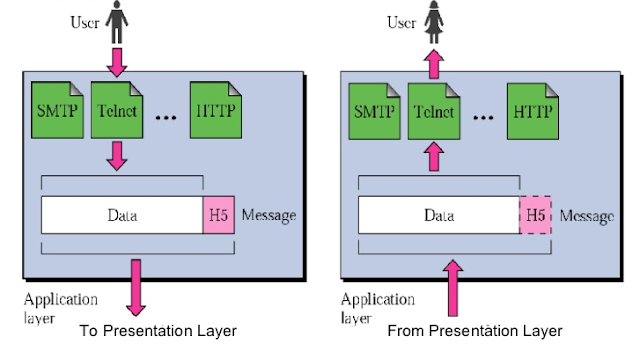OSI Model - 4
Open System Interconnection
(OSI) Model - 4
Summary on what we have studied in last tutorial :-
- Session layer establishes, manages, synchronizes and terminates connection between the computers. It also sets up, co-ordinates and terminates interactions and dialogues between communicating devices.
- The session layer is responsible for setting up sessions between communicating devices. It allows two devices to enter into dialog (communication process).
- At the session layer, checkpoints (synchronization bits) are added into a stream of data to synchronize the sessions.
- Presentation layer deals with syntax and semantics of the data exchanged between two devices. It transforms the data in the format that will be accepted by the application layer.
- Presentation layer receives data from application layer. It adds header to the data and passes data to the session layer.
- The presentation layer also adds security to data by encrypting it. Encrypting is a process in which the data is converted into form that prevents unauthorized users from reading.
- Data compression refers to a process of encoding data using less number of bits. This process reduces the number of bits used to represent the information. It is important while transmitting multimedia information as text, audio and video.
(1.7) Application Layer :-
This is seventh layer of OSI Model. It provides the means for the users to access information on the network using an application. It also supports services such as electronic Mail (e-mail), remote file access and transfer and shared database management.
Functioning of Application layer is shown in the figure :
 |
| Application layer |
Services provided by Application layer are :
- Network Virtual Terminal : It is a software version of physical terminal. Using this software the user can log on to the computer that is remotely connected on the network. The application layer emulates a terminal at the remote host. When the user's computer wants to communicate with remote host, it communicates with virtual terminal that converts the data into intermediary format used by the virtual terminal and sends it to the remote host. After processing the data the remote host replies to the terminal in the reverse order.
- File Transfer, Access and Management (FTAM) : Using the application user can access file ( to make change ) in a remote host. It also enables the user to retrieve and manage files from a remote computer so that the files can be used on a local computer.
- Mail Services : Using the application e-mails can be forwarded to another device. Message handling system (MHS) is the OSI protocol used to transfer mail over the internet.
- Directory Services : Another services provided by the Application layer is directory services. A directory is a source of information about objects such as user, organisations, programs and files. These objects are managed by directory services.
(2) Summary of Layer :-
- Physical layer is responsible for actual transmission of bits over the medium. It deals with electrical and mechanical functions.
- Data link layer is responsible for node to node delivery of frames.
- Network layer is responsible for end to end delivery of packets.
- Transport layer is responsible for end to end delivery of entire message.
- Session layer is responsible for establishing, managing and terminating sessions.
- Presentation layer is responsible for translation, encryption and data compression.
- Application layer is responsible for providing access to network resources.
PDF and MCQs of OSI Model
will be out soon !
=================================================
Thanks for reading !
Have a GOOD DAY !




Comments
Post a Comment